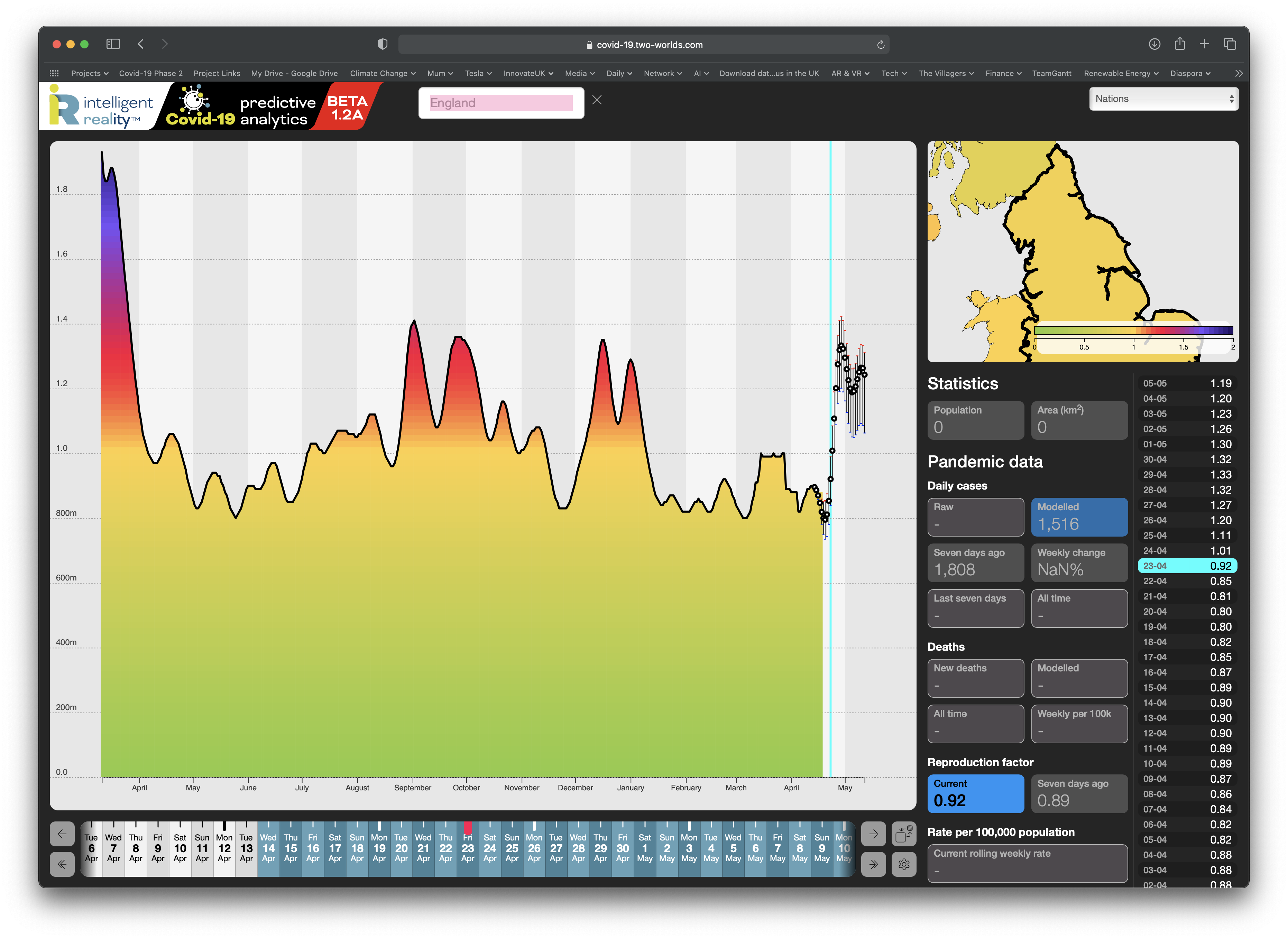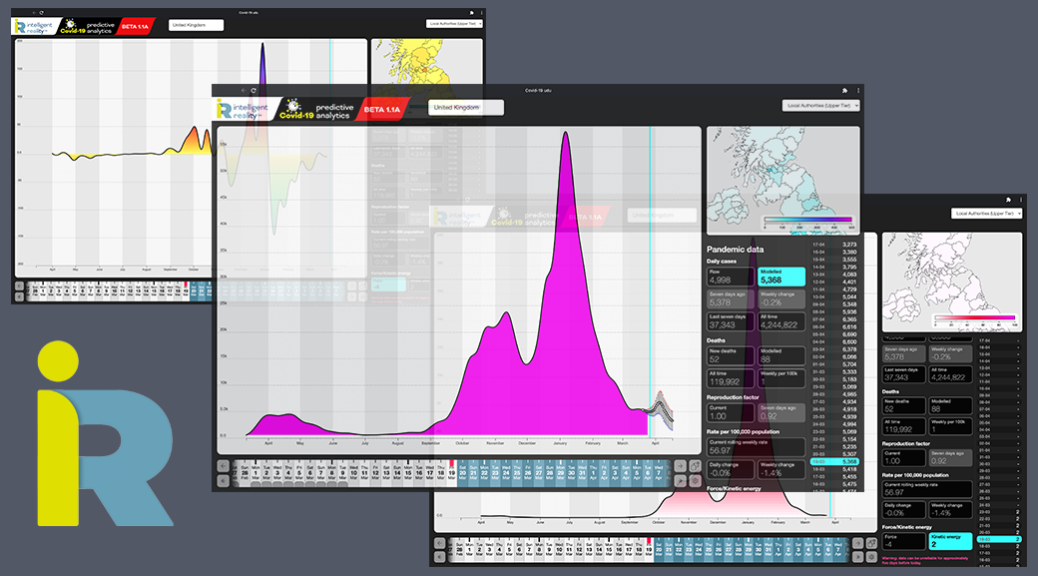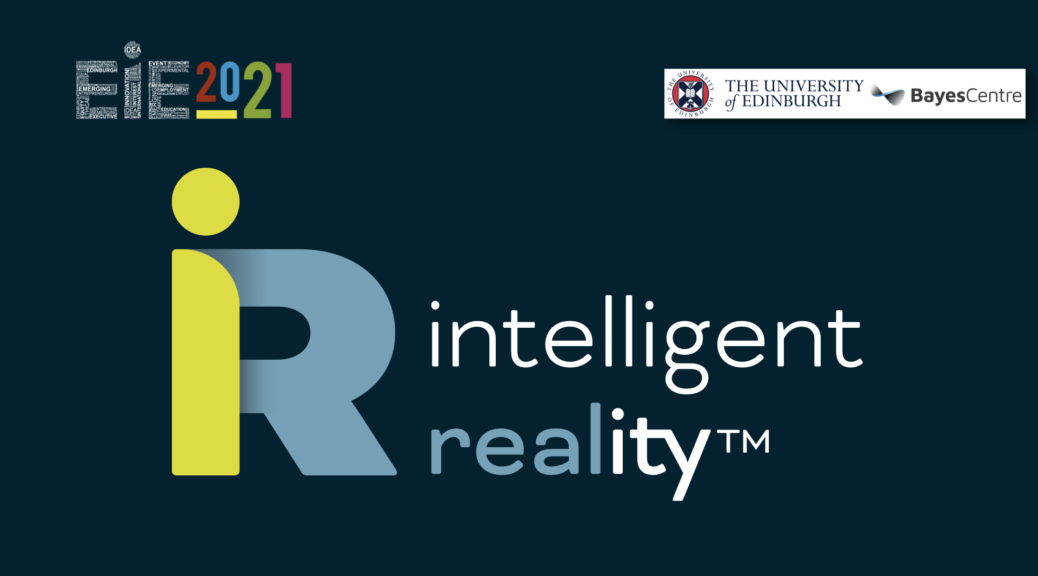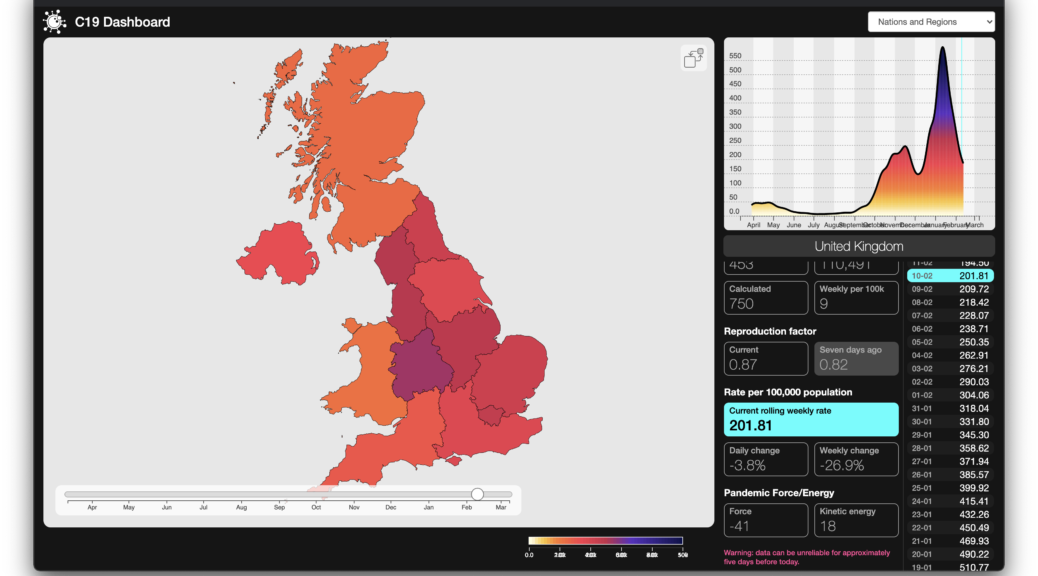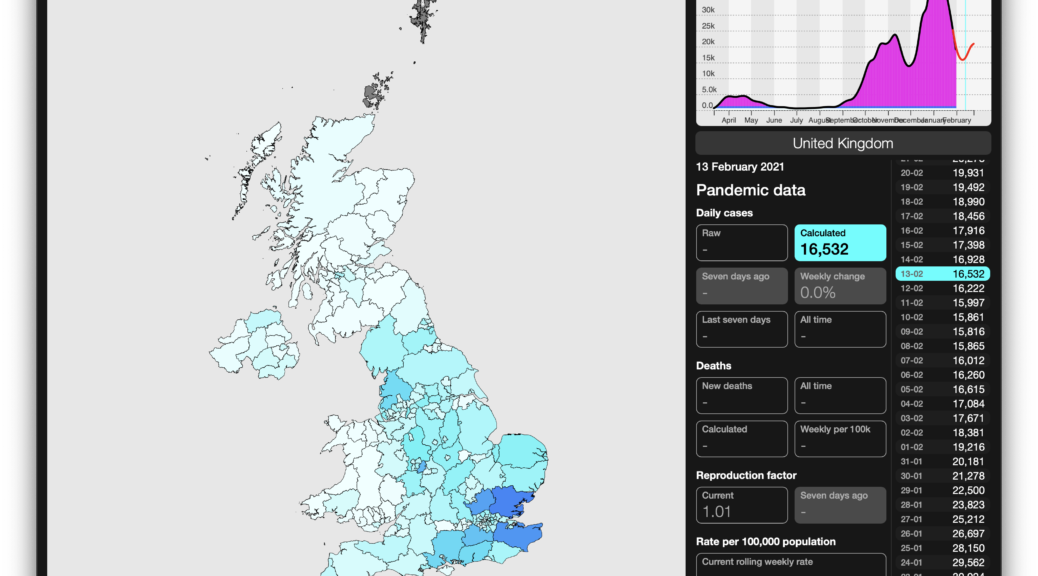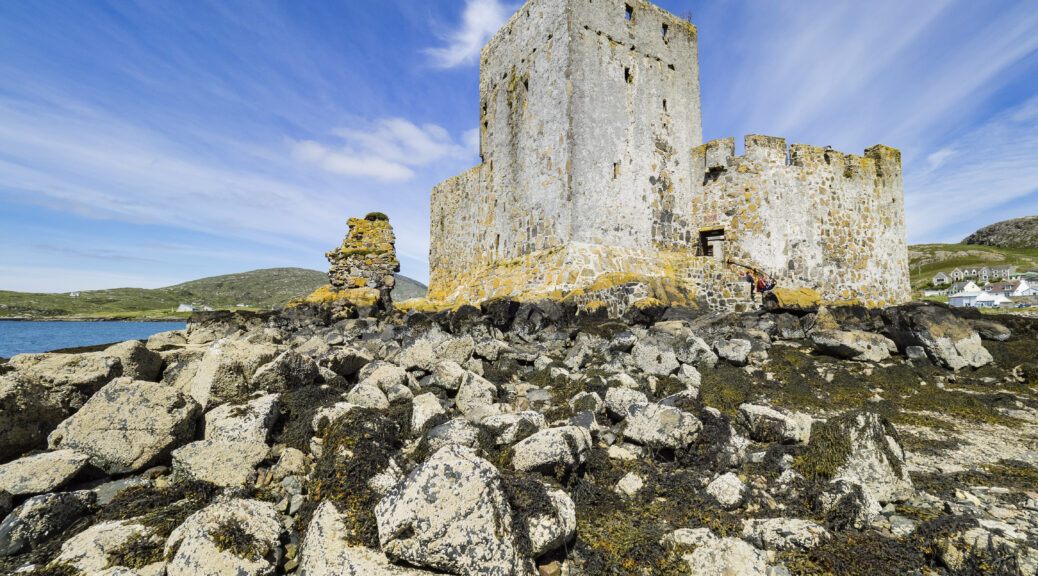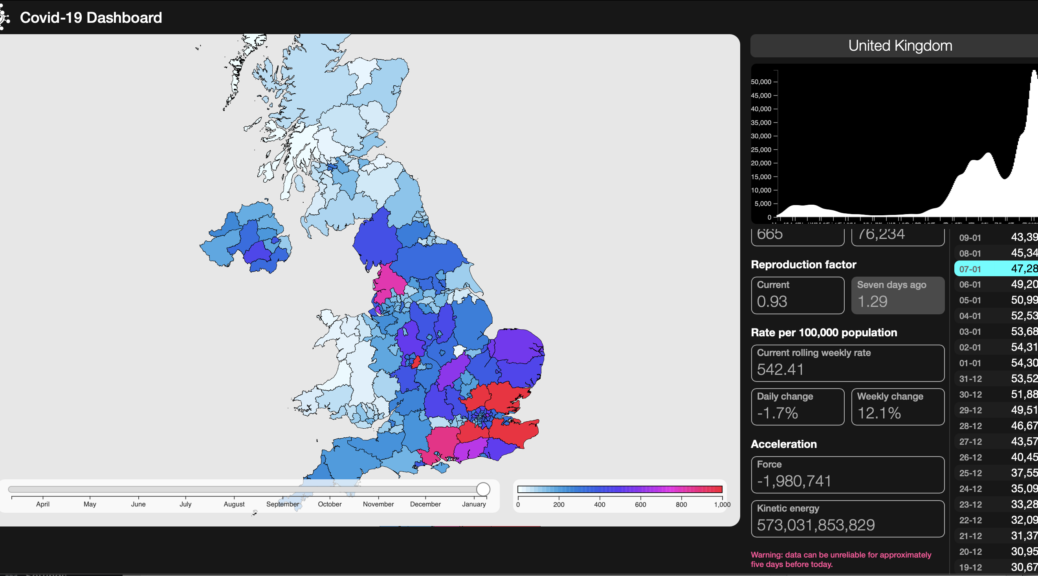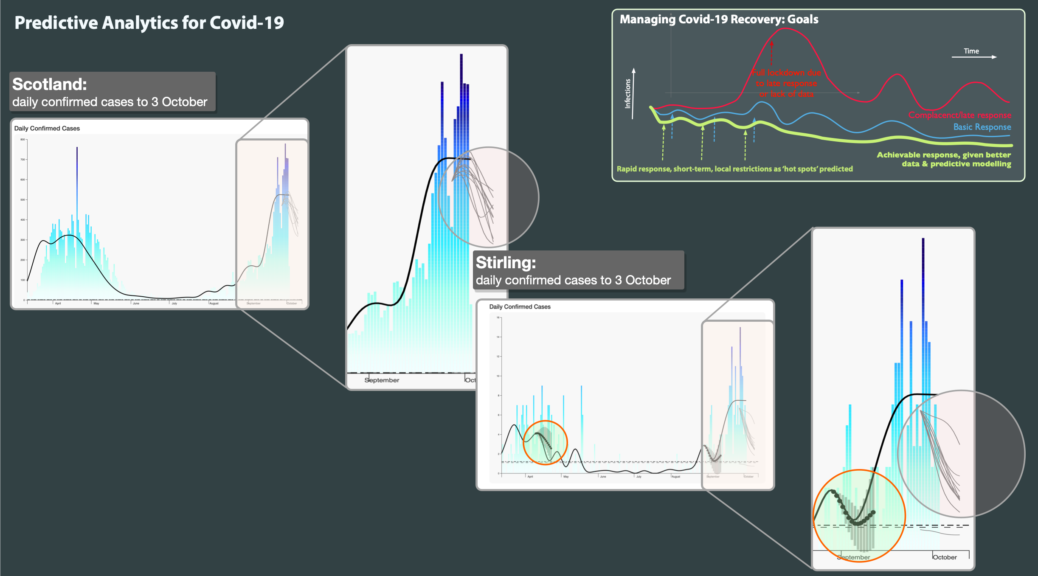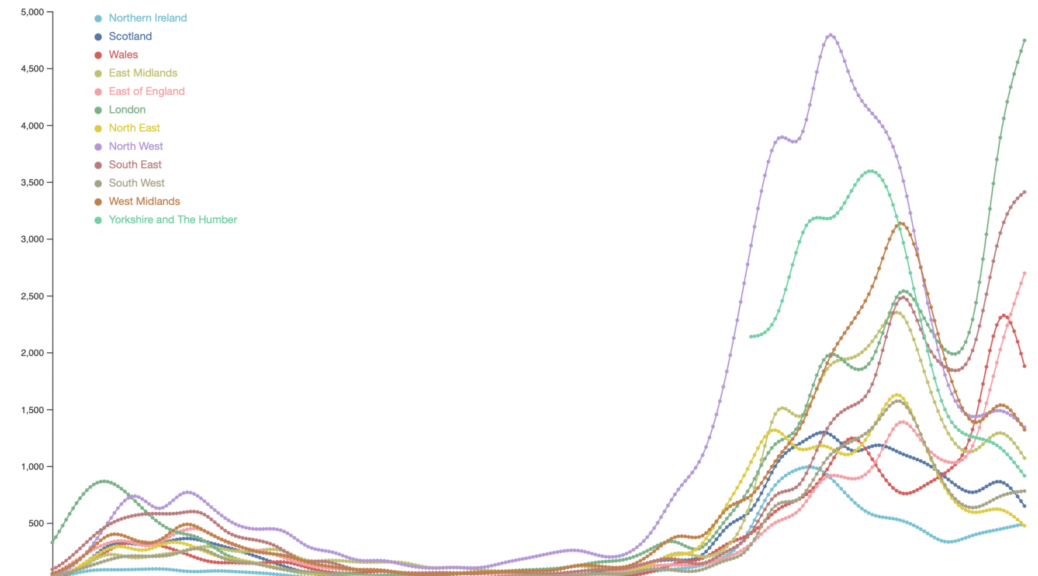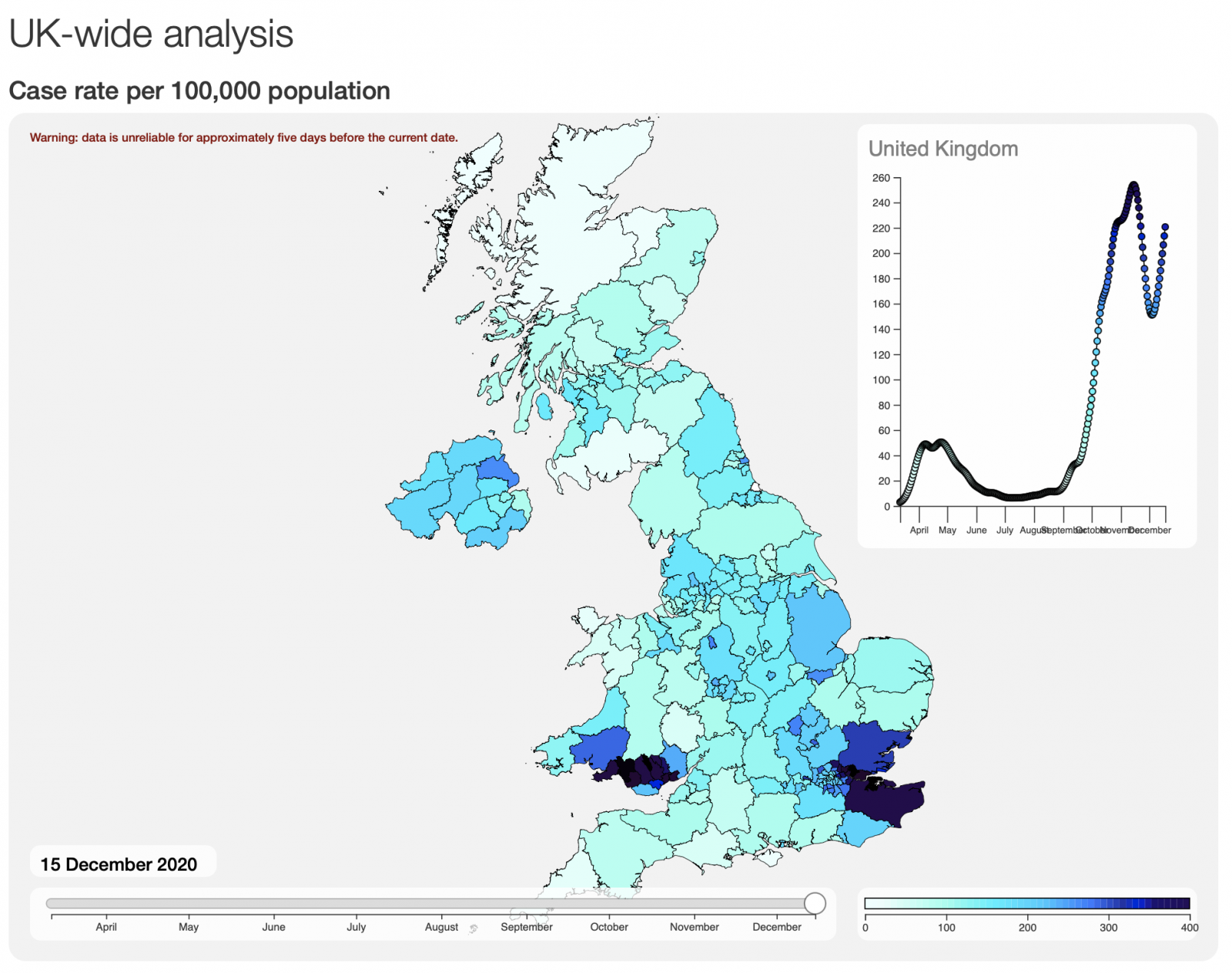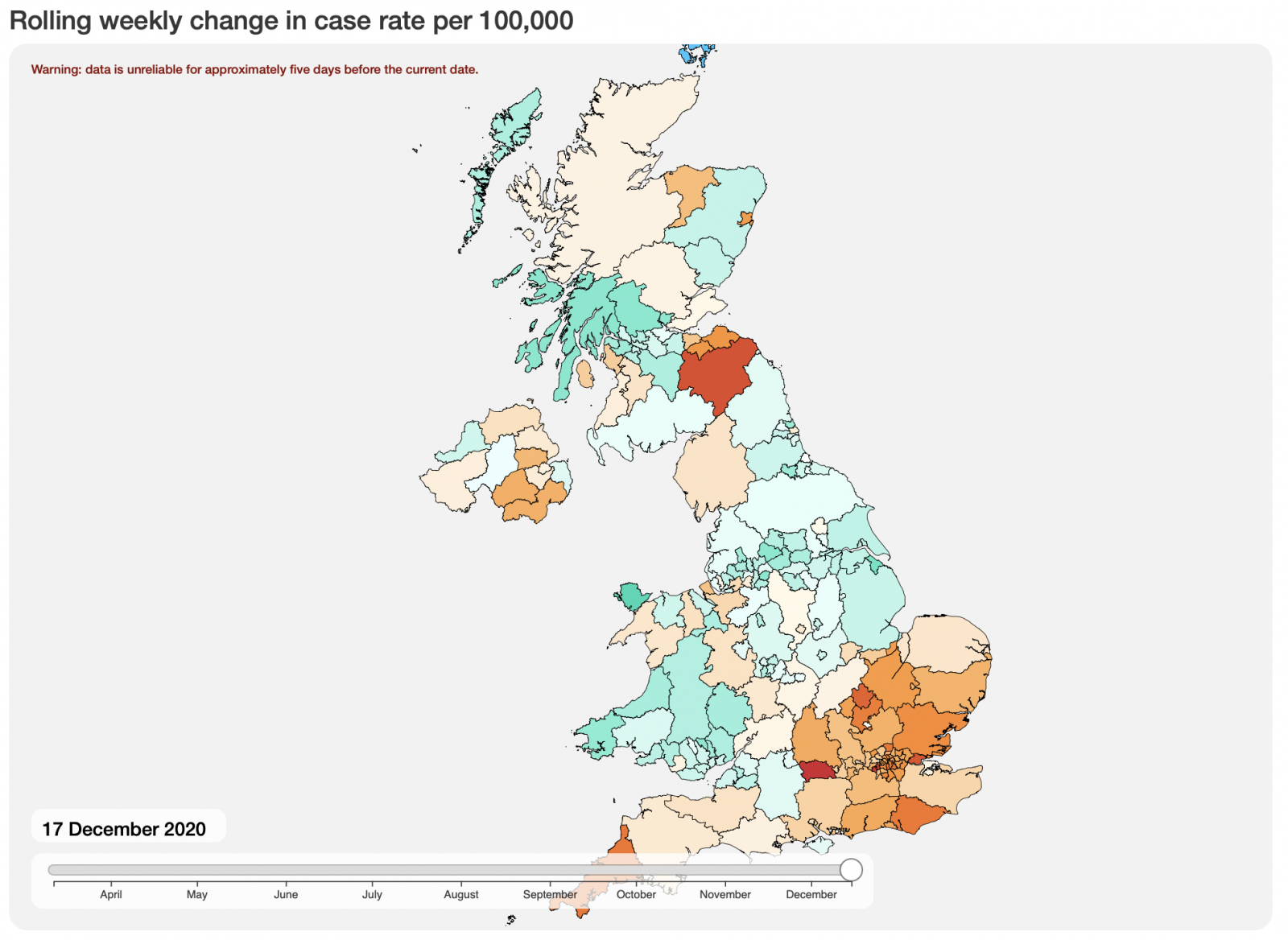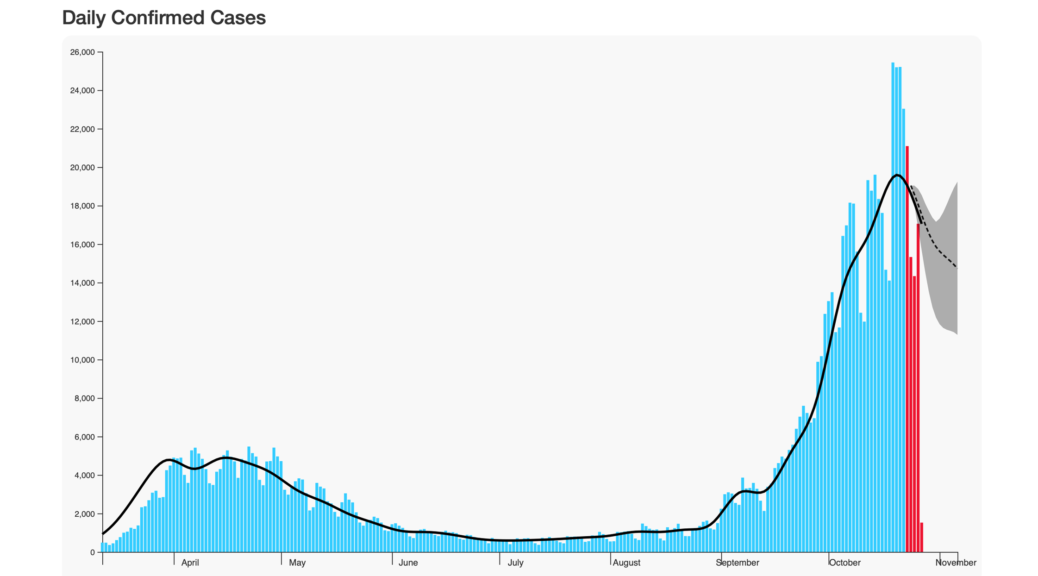We are pleased to announced that our new company, Intelligent Reality, has been accepted into EIE’s 2021 cohort, which showcases the most innovative, data-driven tech companies from Scotland, the UK and beyond. EIE’s (Engage, Invest, Exploit) annual conference features the the most promising high-growth companies who are seeking funding, from seed to series A.
Over the last 18 months we have successfully developed both our generic platform and environmental and geospatial applications, with an SBRI-funded R&D programme for Scottish Natural Heritage (now NatureScot) and, latterly, with three rounds of funding from InnovateUK. These have led to the successful development of inferential tools for exploratory, analytic and predictive modelling of the Covid-19 pandemic, as well as enhancing our core platform.
We have not only developed our analytic and predictive pipeline, but have further developed our relationship with udu, the revolutionary, discovery-based data intelligence platform, itself co-founded by Two Worlds.
With academic and industrial partners, we have also explored real time applications in precision agriculture and pollution monitoring.
Intelligent Reality, with staff in Scotland and Germany, has been formed to exploit the successful outcomes of Two Worlds’ incubation of its adaptive, self-organising approach to data analytics, providing insight and predictive intelligence for real world applications in dynamic environments.
EIE, which is run by the Bayes Centre at Edinburgh University in partnership with the DDI (Data-Driven Innovation) initiative, is a year-round programme highlighted by a day of pitching to investors from across the globe. EIE21 takes place on 10 June.
